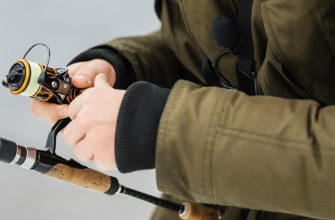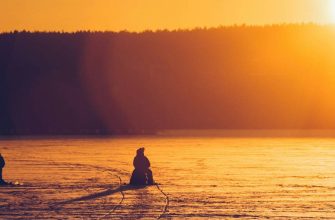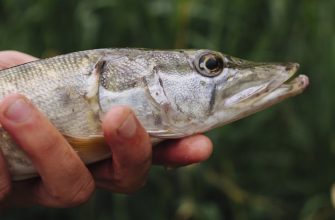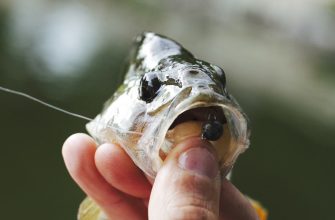- Understanding Trout Behavior
- Habitat and Feeding Patterns
- Factors Affecting Trout Behavior
- Types of Lures for Trout Fishing
- Spinnerbaits
- Soft Plastic Baits
- Spoon Lures
- Crankbaits
- Fly Fishing Lures
- The Best Trout Lures: Reviews and Recommendations
- Best Lure for Stocked Rainbow Trout: The Trout Magnet
- Best for Lake Run Trout: The Trout Bead
- Best Trophy Brown Trout Lure: The Smithwick Suspending Rattlin Rogue
- Best Lure for Ice Fishing Big Lake Trout: White Tube Jig
- Best Lure for Trolling for Cutthroat Trout: Midliner Inline Spinner
- Best Brook Trout Lure: Panther Martin In-Line Spinner
- Best Swimbait: Keitech FAT Swing Impact Swimbait
- Trout Hard and Soft Baits
- Hard Baits
- Soft Baits
- Best Trout Jigs
- Berkley PowerBait
- Trout Magnet
- Berkley PowerBait Pre-Rigged Atomic Teaser Jig
- Southern Pro Tiny Worms
- Eurotackle Micro Finesse Anisoptera
- Vanfook Leather Leech
- Best Trout Inline Spinners
- Mepps Aglia Spinner
- Blue Fox Vibrax Bullet Fly
- Worden’s Original Rooster Tail
- Blue Fox Vibrax Minnow Spin
- Best Trout Spoons
- ACME Kastmaster
- Thomas Buoyant Spoon
- Luhr Jensen Super Duper
- Jackson Daniel Spoon
- Mukai Clown Spoon
- Outkaster Slammer Spoon
- Best Trout Lure Scent Baits
- Why Choose Berkley PowerBait?
- The Best Techniques for Using Berkley PowerBait
- Additional Tips and Considerations
- Choosing the Right Lure
- Matching the Hatch
- Color Selection
- Size and Weight Considerations
- Techniques for Using Trout Lures
- Casting and Retrieving
- Drift Fishing
- Jigging
- Trolling
- Tips for Trout Fishing Success
- Seasonal Variations
- Weather Conditions
- Presentation Techniques
- FAQs
- Q: What are the best trout lures for fishing in 2023?
- Q: Which lures are most effective in catching big trout?
- Q: What type of lures do stocked trout like?
- Q: Can you list some of the best trout lures for 2023?
- Q: Why are jerkbaits considered a go-to lure for trout fishing?
- Q: What are the best tactics for fishing with a trout magnet?
- Q: How can I decide which color choices to use when fishing for trout?
- Q: Why are marabou jigs a staple for trout and salmon fishing?
- Q: What should be the final thoughts when choosing lures for trout fishing?
- Q: How can I imitate the natural forage of trout when fishing?
Are you ready to dive into the exciting world of trout fishing? Look no further! In this article, we will explore the best trout lures of 2023, including top-rated lures, crankbaits, and more, to help you catch those elusive trout.
Trout angling enthusiasts know that having the right lure can make all the difference. Whether you’re targeting wild trout in their natural habitat or going after stocked trout in rivers and tributaries, having a variety of lures in your tackle box is essential. From jerkbaits to jigheads, we’ll cover the must-have lures that will entice even the most finicky trout.
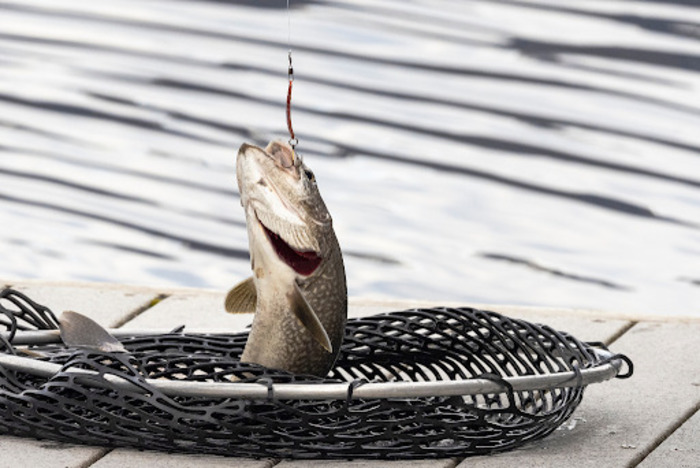
One popular category of lure for trout angling is the wee crankbaits. These small but mighty lures produce a thump that can’t be ignored by trout lurking in larger rivers and tributaries. The vibrating and realistic design of imitations makes them irresistible to trout of all sizes.
Another favorite among trout anglers is the brass spinner. With its flashy ribbed design, this lure mimics the movement of bait fish, attracting trout from a distance. Whether you decide to make your own or purchase one from your local tackle shop, the brass spinner is a go-to for many trout angling enthusiasts.
For those targeting steelhead trout, light line and inline spinners are often the preferred choice. These lures provide accurate throwing and deep water control, increasing your chances of a successful catch.
Remember, when it comes to trout angling, having a variety of lures in your arsenal is key. Experiment with different styles and colors to see what works best for the trout in your area. So grab your gear, head to your favorite trout angling spot, and get ready for an unforgettable fishing adventure!
Understanding Trout Behavior
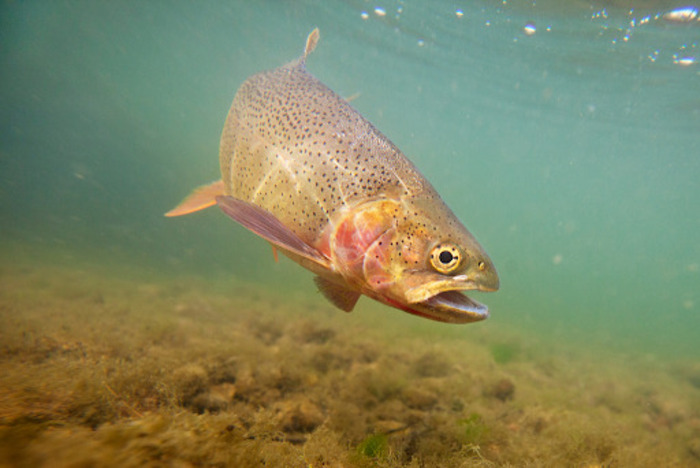
Habitat and Feeding Patterns
Trout are well-known for their specific habitat requirements and feeding patterns. Understanding these aspects is crucial for successful trout angling. Let’s explore them in detail:
Trout Habitat: Trout are typically found in cold, clear rivers, streams, and lakes across America. They prefer clean water with a good oxygen supply. Look for areas with underwater structures like rocks, logs, and undercut banks, as trout often seek shelter and ambush their prey in these spots.
Feeding Patterns: Trout are opportunistic feeders and their diet varies depending on the available food sources in their habitat. They primarily feed on aquatic insects, crustaceans, small fish, and even terrestrial insects that fall into the water. Understanding their feeding habits will help you select the right lures and baits to attract their attention.
Factors Affecting Trout Behavior
Trout behavior is influenced by various factors that can impact their feeding and movement patterns. Here are some key factors to consider:
Water Temperature: Trout are cold-water species and their activity levels are closely tied to water temperature. They tend to be more active and feed actively in cooler water temperatures, while extreme heat can make them sluggish and less inclined to bite. Monitoring water temperatures and adjusting your fishing strategies accordingly can greatly improve your chances of success.
Deepness and Current: Trout prefer certain deeps and currents depending on the time of year and environmental conditions. They are often found in deeper pools during hot summer months to escape warmer surface temperatures. Understanding the water deep and currents that trout prefer during different seasons will help you choose the right areas.
Weather Conditions: Trout behavior can be influenced by weather conditions such as sunlight, cloud cover, and barometric pressure. They may become more active and feed more aggressively during overcast conditions or when there is a slight drizzle. Pay attention to weather forecasts and adjust your fishing plans accordingly.
Availability of Prey: The abundance and availability of food sources in their habitat greatly influence trout behavior. Understanding the prevalent food sources and imitating them with your choice of lures and baits will increase your chances of enticing trout to strike.
Types of Lures for Trout Fishing
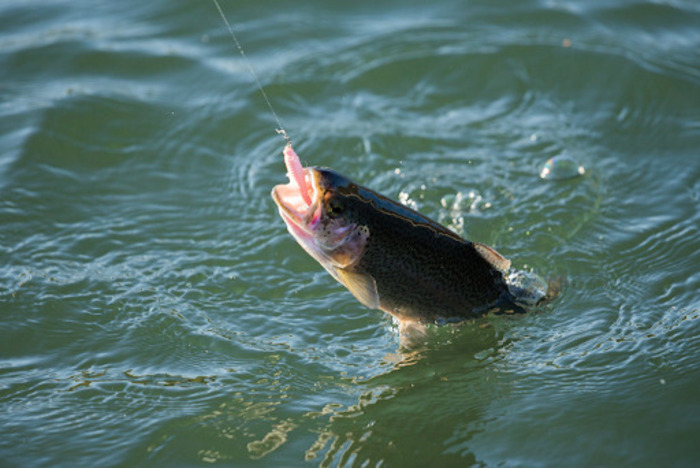
Spinnerbaits
Spinnerbaits are versatile lures that can be used to target various fish species, including trout. These lures consist of a metal blade that spins as it is retrieved through the water, creating flash and vibrating to attract the attention of trout. Spinnerbaits come in different sizes and colors, allowing anglers to match the hatch and mimic the prey that trout are feeding on.
Soft Plastic Baits
Soft plastic baits, such as worms and grubs, are another excellent option for trout angling. These lures are made of soft, flexible material that mimics the appearance and movement of natural prey. When rigged properly, soft plastic baits can be incredibly lifelike in the water, enticing trout to strike. They can be fished on a variety of rigs, including Texas rigs and Carolina rigs, depending on the fishing conditions.
Spoon Lures
Spoon lures are metal lures that have a curved shape resembling a spoon. These lures are known for their wobbling action and flash, which can be very attractive to trout. Spoon lures come in different sizes and colors, allowing anglers to experiment and find the best option for the specific fishing situation. They are commonly thrown and retrieved and can be effective in both still and moving water.
Crankbaits
Crankbaits are hard-bodied lures that are designed to mimic the movement of bait fish. These lures have a diving lip that allows them to dive to specific depths, making them ideal for targeting trout at different water deepness. Crankbaits come in various shapes, sizes, and colors, allowing anglers to select the appropriate option based on the fishing conditions and the trout’s preferences.
Fly Fishing Lures
Fly fishing lures, also known as flies, are an essential part of fly fishing for trout. These lures are designed to imitate insects, bait fish or other prey that trout feed on. Fly fishing lures are typically made of feathers, fur, and other materials, and are tied onto a hook. Anglers use specialized fly rods and lines to throw the flies onto the water’s surface or below the water’s surface, depending on the fishing technique.
The Best Trout Lures: Reviews and Recommendations
Best Lure for Stocked Rainbow Trout: The Trout Magnet
The Trout Magnet is a go-to lure for stocked rainbow trout. Its small size and realistic presentation make it irresistible to these fish. Here are the key features of the Trout Magnet:
- Size: 1/64 ounce
- Color options: Black, Chartreuse, White
- Material: Soft plastic
- Action: Slow sinking
Pros:
- Mimics natural food sources
- Versatile and effective in various water conditions
- Easy to use, even for beginners
Cons:
- Small size may be challenging to handle for some anglers
Best for Lake Run Trout: The Trout Bead
When targeting lake run trout, the Trout Bead is a top choice among anglers. This lure mimics the eggs of spawning fish, which attract hungry trout. Here are the key features of the Trout Bead:
- Size: Varies based on bead color and fish species
- Color options: There is a wide range of colors to match different fish eggs
- Material: Hard plastic or glass
- Rigging: Can be used with a hook or as part of a fly setup
Pros:
- Realistic egg imitation
- Versatile for different fishing techniques
- Durable construction
Cons:
- Requires some technique to rig properly
Best Trophy Brown Trout Lure: The Smithwick Suspending Rattlin Rogue
Targeting trophy brown trout requires a lure that can entice these elusive fish. The Smithwick Suspending Rattlin Rogue is a proven winner in this category. Here are the key features of this lure:
- Size: 4.5 inches
- Color options: Wide range of natural and flashy colors
- Material: Hard plastic
- Action: Suspending and rattling
Pros:
- Realistic baitfish profile
- Effective for attracting larger brown trout
- The rattling sound adds extra attraction
Cons:
- Requires precise retrieval technique for optimal results
Best Lure for Ice Fishing Big Lake Trout: White Tube Jig
Ice fishing for big lake trout requires a lure that can grab their attention even in cold conditions. The White Tube Jig fits the bill perfectly. Here are the key features of this lure:
- Size: Varies based on jig head weight and tube length
- Color options: White
- Material: Soft plastic tube on a jig head
- Action: Jigging motion
Pros:
- Imitates small baitfish, a favorite food of lake trout
- Versatile for vertical jigging or throwing under the ice
- Easy to use with minimal setup required
Cons:
- Limited color options may not appeal to all anglers
Best Lure for Trolling for Cutthroat Trout: Midliner Inline Spinner
When trolling for cutthroat trout, This lure is a reliable choice. Its spinning blade and enticing action make it irresistible to these fish. Here are the key features of this lure:
- Size: Varies based on spinner blade and lure body size
- Color options: Wide range of colors and patterns
- Material: Metal blade and body with treble hook
- Action: Spin and wobble
Pros:
- Flashy and attractive design
- Effective for covering large areas while trolling
- Durable construction for long-lasting use
Cons:
- Requires trolling setup and technique
Best Brook Trout Lure: Panther Martin In-Line Spinner
Brook trout are known for their aggressive nature, and the Panther Martin In-Line Spinner is a proven winner for targeting them. Here are the key features of this lure:
- Size: Varies based on spinner blade and lure body size
- Color options: Wide range of colors and patterns
- Material: Metal blade and body with treble hook
- Action: Spin and wobble
Pros:
- Provokes aggressive strikes from brook trout
- Versatile for various fishing techniques
- High-quality components for durability
Cons:
- Requires some practice to achieve the right retrieval speed
Best Swimbait: Keitech FAT Swing Impact Swimbait
When targeting trout with a swimbait, the Keitech FAT Swing Impact Swimbait stands out from the rest. Its lifelike action and realistic appearance make it a go-to choice. Here are the key features of this lure:
- Size: Varies based on swimbait length and weight
- Color options: Wide range of natural and vibrant colors
- Material: Soft plastic
- Action: S-shaped swimming motion
Pros:
- Realistic swimming action
- Highly effective for enticing larger trout
- Durable construction for repeated use
Cons:
- Requires some skill to master the retrieve technique
Trout Hard and Soft Baits
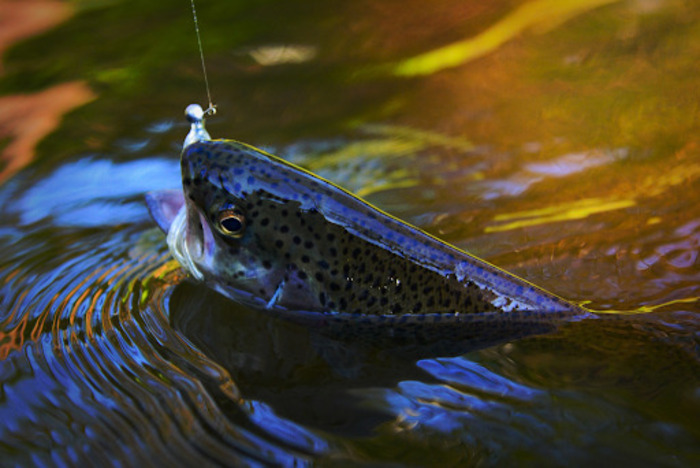
Hard Baits
When it comes to trout angling, hard baits can be incredibly effective in enticing these elusive fish. Hard baits are typically made of durable materials and mimic the appearance and movement of natural prey. Here are some of the best hard baits for trout angling:
- Spoons: Spoons are a classic choice for targeting trout. Their curved shape and flashy design create enticing vibrations and reflections in the water, attracting trout from a distance. Look for spoons in silver, gold, or vibrant colors to increase your chances of success.
- Crankbaits: Crankbaits are designed to imitate small fish, making them an excellent choice for fooling hungry trout. These lures have a diving lip that allows them to dive to specific deepness, where trout are often lurking. Choose crankbaits in natural colors that resemble the local bait fish.
- Plugs: Plugs are versatile hard baits that can be used in various trout angling scenarios. These lures have a realistic appearance and often feature built-in rattles or other noise-making mechanisms to attract trout. Experiment with different sizes and colors to find what works best for your fishing location.
Soft Baits
Soft baits are another effective option when targeting trout. These lures are typically made of soft plastic and come in various shapes and sizes. The lifelike action and texture of soft baits make them irresistible to hungry trout. Here are some top choices for soft baits:
- Soft Plastic Worms: Worms are a classic bait that trout find hard to resist. Opt for soft plastic worms in natural colors like brown or green. Rig them on a small jig head or use a weightless Texas rig for a more natural presentation.
- Grubs: Grubs are small, soft plastic lures with a tapered body and a curly tail. They imitate aquatic insects and can be fished on a jig head or as a trailer on a spinner or spoon. Grubs in earthy tones like olive, black, or brown tend to work well for trout.
Best Trout Jigs
Berkley PowerBait
Berkley PowerBait is a renowned brand known for its effective trout lures. Their jigs are designed to mimic the natural prey of trout, making them irresistible to these fish. With a wide range of colors and sizes available, anglers can choose the perfect jig to suit their fishing conditions.
Trout Magnet
Another excellent option for trout angling is the Trout Magnet jig. The Trout Magnet features a simple split-tail eel body with ridged grooves and two-tone color palettes. This unique design creates an enticing swimming action that drives trout crazy. When paired with the Trout Magnet Jighead, it becomes a deadly combination that consistently produces results.
Berkley PowerBait Pre-Rigged Atomic Teaser Jig
For anglers who prefer pre-rigged jigs, the Berkley PowerBait Pre-Rigged Atomic Teaser Jig is an excellent choice. This jig comes ready to fish, saving you time and effort. The lifelike design and enticing scent of the PowerBait attract trout and trigger their predatory instincts.
Southern Pro Tiny Worms
When it comes to finesse fishing for trout, the Southern Pro Tiny Worms jig is a go-to option for many anglers. These small, soft plastic worms are incredibly effective in enticing trout into biting. Their realistic appearance and subtle action make them a favorite among trout fishermen.
Read more: The Best Fishing Lines for Trout in 2024 | Fly-Fishing, Braid & More
Eurotackle Micro Finesse Anisoptera
The Eurotackle Micro Finesse Anisoptera is a unique jig that combines the best features of both a jig and a fly. Its realistic fly-like appearance and lifelike action make it a great choice for targeting selective trout. The Anisoptera comes in various colors and sizes, allowing anglers to match the hatch and increase their chances of success.
Vanfook Leather Leech
The Vanfook Leather Leech is a jig that imitates a leech, a favorite food source for trout. Its realistic design and natural movement make it highly effective in fooling trout into striking. The Vanfook Leather Leech is a top choice for anglers targeting larger trout.
Best Trout Inline Spinners
Mepps Aglia Spinner
The Mepps Aglia Spinner is a classic and time-tested in-line spinnerbait that has been a favorite among anglers for decades. Its unique blade design creates enticing vibrations and flashes that grab the attention of trout in various water conditions. Available in a range of sizes and colors, the Mepps Aglia Spinner can be customized to match the preferences of different trout species.
Blue Fox Vibrax Bullet Fly
The Blue Fox Vibrax Bullet Fly is another top choice for trout anglers seeking in-line spinnerbaits. Its bullet-shaped body allows for long and accurate casts, reaching trout even in hard-to-reach spots. The spinner blade produces an alluring spinning action that mimics the movements of a wounded baitfish, triggering aggressive strikes from hungry trout. This in-line spinner bait is particularly effective in fast-moving streams and rivers.
Worden’s Original Rooster Tail
Worden’s Original Rooster Tail is a versatile in-line spinnerbait that has earned a well-deserved reputation for its consistent performance in trout angling. Its unique blade design creates a captivating spinning motion that imitates the movement of small fish, attracting trout from a distance. Available in a wide range of colors and sizes, anglers can choose the perfect Rooster Tail to match the prevailing water and light conditions.
Blue Fox Vibrax Minnow Spin
The Blue Fox Vibrax Minnow Spin is a deadly inline spinner that effectively imitates the appearance and movements of a small minnow, a favorite prey of trout. Its lifelike action combined with the flash and vibration produced by the spinner blade make it irresistible to trout in both still waters and flowing streams. This in-line spinner bait is a go-to choice for anglers targeting larger trout species.
Best Trout Spoons
ACME Kastmaster
The ACME Kastmaster is a tried and true spoon that has been a favorite among anglers for years. Its unique design and weight distribution allow for long, accurate casts, making it ideal for covering a large area of water. The flashy finish and erratic action mimic the movements of a wounded bait fish, enticing trout to strike.
Thomas Buoyant Spoon
Another top choice for trout angling is the Thomas Buoyant Spoon. This spoon is known for its exceptional balance and lifelike swimming action. Its slender profile and vibrant colors make it irresistible to trout, especially in clear water conditions. Whether you’re throwing from the shore or trolling from a boat, the Thomas Buoyant Spoon is a reliable option.
Luhr Jensen Super Duper
The Luhr Jensen Super Duper is a compact spoon that packs a punch. Its compact size makes it perfect for targeting small streams and creeks where trout often hide. Despite its small stature, the Super Duper features a unique shape and wobbling action that grabs the attention of nearby trout. Don’t be fooled by its size – this spoon is a proven trout catcher.
Jackson Daniel Spoon
The Jackson Daniel Spoon is a versatile spoon that can be used in a variety of fishing situations. Its concave design and flashy finish create a realistic flash and vibrating that attracts trout from a distance. Whether you’re fishing in rivers, lakes, or ponds, the Jackson Daniel Spoon is sure to deliver results.
Mukai Clown Spoon
For anglers looking to add some color to their tackle box, the Mukai Clown Spoon is a fantastic option. This spoon features a vibrant and eye-catching pattern that drives trout wild. Its erratic swimming action and realistic scale pattern make it a go-to choice for trout anglers seeking a bit of flair.
Outkaster Slammer Spoon
Last but not least, the Outkaster Slammer Spoon is a heavyweight contender in the world of trout angling. This spoon is designed to cast long distances and reach deep waters where trophy-sized trout often lurk. Its large profile and flashy finish create a commotion in the water that trout find hard to resist.
Best Trout Lure Scent Baits
One highly regarded option that consistently produces results is the Berkley PowerBait Trout Baits.
Why Choose Berkley PowerBait?
Berkley PowerBait has long been trusted by anglers for its effectiveness in attracting trout. These baits are specifically designed to mimic the scent and texture of natural bait, making them irresistible to trout. The PowerBait formula is infused with a powerful scent that triggers the feeding response in trout, enticing them to strike.
The Best Techniques for Using Berkley PowerBait
When using Berkley PowerBait for trout angling, there are a few key techniques that can greatly increase your chances of success. Here are some tips to keep in mind:
- Proper Rigging: Rig your Berkley PowerBait on a size 8 or 10 hook, using a small split shot or egg sinker a foot or two above the hook to provide some weight and help the bait sink to the desired deepness.
- Slow and Steady: When retrieving your bait, use a slow and steady motion to mimic the natural movement of baitfish. This will attract trout and entice them to strike.
- Experiment with Colors: Berkley PowerBait comes in a variety of colors, so don’t be afraid to experiment and find what works best for the conditions you’re fishing in. In general, brighter colors tend to work well in murky water, while more natural, earth-toned colors are effective in clear water.
- Pay Attention to Depth: Trout often feed at different deepness depending on the time of day and water conditions. Adjust the depth of your bait accordingly to target the active feeding zone.
Additional Tips and Considerations
While Berkley PowerBait is an excellent choice for trout angling, it’s important to remember that fishing success can vary depending on factors such as location, weather, and the specific preferences of the trout in your area. It’s always a good idea to do some research on local fishing reports and talk to experienced anglers to gather additional insights and recommendations.
Remember, fishing is not an exact science, and what works one day may not work the next. The key is to stay adaptable, experiment with different techniques and colors, and enjoy the experience of being out on the water.
Choosing the Right Lure

Matching the Hatch
Matching the hatch refers to selecting a lure that closely resembles the natural prey of the fish you’re targeting. By imitating the size, shape, and color of the baitfish or insects in the water, you increase your chances of enticing a strike.
Pay attention to the local ecosystem and observe the predominant food sources. This will help you choose a lure that mimics the natural prey and increases your chances of success.
Color Selection
The color of your lure plays a significant role in attracting fish. Different colors work best under different conditions, so it’s important to consider the water clarity and light conditions. In clear water, natural and subtle colors like silver, white, and brown tend to be effective.
In murky or stained water, brighter and more vibrant colors like chartreuse, orange, and pink can be more visible and enticing. Experiment with different colors to find what works best in your fishing environment.
Size and Weight Considerations
The size and weight of your lure can greatly impact your fishing experience. Smaller lures are generally more suitable for targeting smaller fish or when the fish are less active. Conversely, larger lures are effective for attracting bigger fish or when the fish are actively feeding.
Consider the size of the fish you’re targeting and the prevailing conditions. Adjusting the weight can also help you control the deepness at which your lure swims. Lighter lures stay higher in the water column, while heavier lures sink deeper.
Techniques for Using Trout Lures
Casting and Retrieving
Casting and retrieving is a popular technique for targeting trout in both still waters and flowing rivers. To employ this technique, start by selecting a suitable lure from your tackle box. Some popular trout lures include spinners, spoons, and crankbaits.
Begin by throwing your lure into the water near potential trout-holding areas, such as submerged rocks, undercut banks, or shaded areas. Allow the lure to sink to the desired deepness before slowly retrieving it back towards you. Vary the speed and deepness of your retrieve to mimic the movements of natural prey and entice trout to strike.
Drift Fishing
Drift fishing is a technique commonly used in rivers and streams with a steady current. It involves allowing your lure to drift naturally downstream while maintaining tension on the line. This technique is particularly effective when targeting trout that are actively feeding near the bottom of the water column.
To drift fish, cast your lure upstream and allow it to drift downstream while keeping your line tight. This allows the lure to mimic the natural drift of insects and other aquatic organisms that trout feed on. Pay attention to any subtle movements or tugs on the line, as trout often take the lure during the drift.
Jigging
Jigging is a versatile technique that can be effective in various trout angling scenarios, including lakes, ponds, and rivers. It involves imparting an up-and-down motion to your lure to attract the attention of trout. Jigging can mimic the movements of injured bait fish or other prey, triggering a predatory response from trout.
To jig for trout, cast your lure out and let it sink to the desired deepness. Then, use short, sharp upward motions of your rod tip to create an enticing action. Allow the lure to fall back down, maintain tension on the line, and repeat the jigging motion. Experiment with different jigging rhythms and deepness to find what works best for the trout in your fishing location.
Trolling
Trolling is a popular technique for targeting trout in larger bodies of water such as lakes and reservoirs. It involves dragging a lure behind a moving boat to cover a larger area and search for actively feeding trout. This technique allows you to present your lure at various deepness and locations to increase your chances of success.
To troll for trout, select a suitable lure and attach it to a fishing line behind your boat. Adjust the speed of your boat to achieve the desired trolling speed, typically around 1 to 2 miles per hour. Pay attention to any changes in depth or structure and vary the distance of your lure from the boat to find where the trout is located.
Tips for Trout Fishing Success
Seasonal Variations
Trout fishing success can vary depending on the season. Understanding these seasonal variations can greatly improve your chances of catching trout.
During the spring, trout are actively feeding after a long winter. They are often found in shallower water near the shore, where they can find an abundance of insects and other food sources. Using lures that mimic insects, such as dry flies or nymphs, can be highly effective during this time.
In the summer, trout tend to seek cooler water temperatures. Look for deeper pools and shaded areas where the water is cooler. Using lures that imitate small fish or crayfish can be effective during this season.
Fall is a great time for trout angling as they are preparing for the winter. They become more aggressive and are actively feeding to build up their energy reserves. Using lures that resemble baitfish or small spinners can yield great results during this time.
Winter trout angling requires a different approach. Trout tend to be less active and slower during this season. Fishing in slower-moving pools and using small bait or lures that are presented slowly can be effective.
Read more: The Best Spots for Outdoor Fishing Fun in National Parks Across America
Weather Conditions
Weather conditions play a crucial role in trout angling success. Pay attention to the following factors:
- Temperature: Trout are cold-water species, so they are more active in cooler water temperatures. Early morning or late evening fishing can be more productive when the water is cooler.
- Cloud Cover: Trout are more likely to be active and feeding when the sky is overcast. Cloudy days can provide better fishing opportunities.
- Precipitation: After rain or during a light drizzle, trout are often more active. The increased water flow can dislodge insects and other food sources, attracting trout.
- Wind: A light breeze can create ripples on the water’s surface, which can help to conceal your presence and make it easier to approach trout. However, strong winds can make throwing and presentation difficult.
Presentation Techniques
The way you present your bait or lure can greatly impact your trout angling success. Here are some helpful techniques to consider:
- Casting Accuracy: Trout are often found in specific areas, such as near rocks, fallen trees, or submerged structures. Practice your throwing accuracy to ensure your bait or lure lands in the target zone.
- Retrieve Speed: Experiment with different retrieve speeds to find what works best for the specific conditions. Sometimes a slow, steady retrieve is effective, while other times a fast, erratic retrieve can trigger a strike.
- Depth Control: Adjust the depth at which your bait or lure is presented to match the deepness at which trout are actively feeding. This may require using weighted lures or adjusting your fishing line setup.
- Stealthy Approach: Trout has keen eyesight and can be easily spooked. Approach the fishing area quietly and avoid making unnecessary movements that could alert the trout to your presence.
By considering seasonal variations, paying attention to weather conditions, and using effective presentation techniques, you can greatly improve your chances of success in trout angling.
Remember to always follow local fishing regulations and practice catch-and-release whenever possible to help preserve trout populations for future generations.
Happy fishing!
FAQs
Q: What are the best trout lures for fishing in 2023?
A: There are several top-rated trout lures for 2023, including crankbaits, trout magnets and various imitators that have proven effective in catching trout of all sizes.
Q: Which lures are most effective in catching big trout?
A: For targeting big trout, lures such as large crankbaits, jerkbaits, and realistic imitations of their natural forage are often the most effective due to their ability to entice larger fish.
Q: What type of lures do stocked trout like?
A: Stocked trout tend to respond well to a variety of lures, with popular choices being small crankbaits, trout magnets, and marabou jigs that mimic their natural meal.
Q: Can you list some of the best trout lures for 2023?
A: The list of the best trout lures for 2023 includes rebel crankbaits, X-rap jerkbaits, trout magnets, realistic imitations of crawfish and small fish, and marabou jigs in various colors.
Q: Why are jerkbaits considered a go-to lure for trout fishing?
A: Jerkbaits are considered a go-to lure for trout angling due to their realistic darting action and the ability to mimic the movement of natural meals, making them highly effective in enticing trout to strike.
Q: What are the best tactics for fishing with a trout magnet?
A: When fishing a trout magnet, it’s best to use a small float to control the lure’s sink rate and allow it to flutter along the bottom, imitating the movement of natural meal that trout find irresistible.
Q: How can I decide which color choices to use when fishing for trout?
A: When choosing lure colors for trout angling, it’s often best to consider the contrast against the water’s clarity, with bright colors for stained water and natural hues for clear water, allowing you to imitate the trout’s meal effectively.
Q: Why are marabou jigs a staple for trout and salmon fishing?
A: Marabou jigs are a staple for trout and salmon fishing due to their lifelike movement in the water, making them highly effective in imitating the meal that these fish feed on, resulting in frequent strikes.
Q: What should be the final thoughts when choosing lures for trout fishing?
A: When choosing lures for trout angling, it’s hard to go wrong with a variety of options, including rebel crankbaits, X-rap jerkbaits, trout magnets, and realistic imitations, allowing you to cover lots of water and entice the biggest trout in different conditions. Consider the sink rate, darting action, and color choices to maximize your chances of success.
Q: How can I imitate the natural forage of trout when fishing?
A: To imitate the natural meal of trout, consider using lures that mimic small fish, crawfish, or other prey items found in their habitat. Realistic imitators, such as X-rap jerkbaits, rebel crankbaits, and marabou jigs, are often effective in enticing trout to strike.

